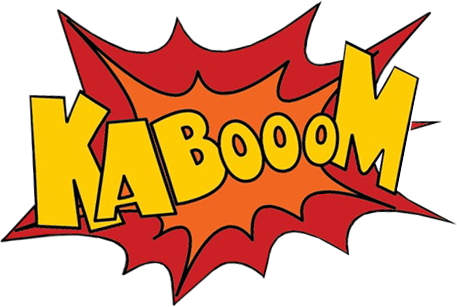Let The Fireworks Show Begin (Page Seven)


Bam... The show begins!
Did You Know? - The earliest documentation of fireworks dates back to 7th century China (time of the Tang Dynasty), where they were invented. The fireworks were used to accompany many festivities. It is thus a part of the culture of China and had its origin there; eventually it spread to other cultures and societies.
The art and science of firework making has developed into an independent profession. In China, pyrotechnicians were respected for their knowledge of complex techniques in mounting firework displays.
Chinese people originally believed that the fireworks could expel evil spirits and bring about luck and happiness.

Wow!
Did You Know? - Svea Fireworks and Sør-Tre officially set the new world record for the most fireworks ignited during a single coordinated display, on November 29, 2014, in the small town of Søgne, Norway.
Hailed as a "tribute to the 200th anniversary of the Norwegian constitution", the display incorporated 540,382 individual firework effects in a spectacular 90 minute show. Guinness World Record adjudicators were on hand to confirm the breaking of the previous record held by Dubai.

Almost like Christmas

The music was coordinated with the fireworks
Did You Know? -
Cherry bombs, M-80s and other heavily charged explosive devices were deemed illegal by federal law in 1966.
The first multi shot repeater imported into the United States was the Flying Dragon & Jumping Tiger.
Red smoke balls are prohibited in California.
In Mexico, the tall towers decorated with fireworks and built for fiestas are called castillos.
In 1996, a string of firecrackers were lit that lasted 22 hours for the Chinese New Year in Hong Kong.
The singing group Alabama has a song on their 1985 album, 40 HR WEEK, called "Fireworks."
An aerial shell has 2 fuses. The user lights the external fuse, and a second, internal fuse burns as the shell flies up igniting the burst or break.

We could see fireworks all over the basic


The lake reflections were quite interesting
Did You Know? -
The first fireworks were actually green bamboo that were thrown into fires to scare spirits away in ancient China, called "pas chuk."
It is believed that gunpowder was discovered accidentally by a Chinese alchemist who mixed sulphur and salt peter (potassium nitrate) over a fire. The Chinese name for gunpowder is "huo yao" (fire chemical).
Placing gun powder into bamboo stalks and then throwing them onto a fire to be ignited produced a louder and more powerful bang; hence the firecracker was born.
Fireworks were soon applied to warfare by attaching them to arrows. The first such use, circa 1200 A.D., involved placing powder into paper tubes with a fuse or a trail of gunpowder wrapped in tissue paper that was attached to the arrows.
The "ground rat" was a tube open on one end where gas would shoot out of the open end propelling it around randomly. This random trajectory led to placing guidance fins on the tube to straighten the flight path. These were the first rockets.
Settlers brought fireworks to the U.S. during 1600s.

Amazing

The fireworks in the background could have been the base

Reds


Purples

Old smokey
Did You Know? -
The first Independence Day fireworks celebration was in 1776, and was memorialized by then future President John Adams as follows:
"The day (Independence Day) will be the most memorable in the history of America. I am apt to believe that it will be celebrated by succeeding generations as the great anniversary festival...it ought to be solemnized with pomp and parade...bonfires and illuminations (fireworks) from one end of this continent to the other, from this day forward forevermore."

Bam!

They lit up the 18th hole

Beautiful... Everyone was "oohing and awwing"


Amazing colors
Did You Know? -
Static electricity in synthetic clothing can ignite fireworks. Those who make fireworks wear cotton all the way down to their underwear.
In today's public display shows, computers are used to control the launching of the fireworks and the synchronization of the aerial bursts with music.
30 years ago professional fireworks shows lasted on average over an hour, in comparison to today's shows which last approximately 20 minutes.
Fireworks use in the United States increased 2½ time since 1992 going from 87,100,000 pounds in 1992 to 220,800,000 in 2003. During the same period, actual injuries decreased over 70% going from 14.3 injuries per 100,000 pounds of fireworks used in 1992 to only 4.2 injuries per 100,000 pounds of fireworks used in 2003.
The most dangerous fireworks-related tragedy in the world occurred on May 16, 1770, during the marriage of King Louis XVI to Marie Antoinette. After the celebratory fireworks show, there was a stampede where approximately 800 people where killed.

Check the reflections

Up up and away!
Did You Know? -
In Arabic countries, rockets were called Chinese arrows.
The earliest recorded use of gunpowder in England, and probably the western world, is by the Franciscan monk Roger Bacon.
Legend has it that Marco Polo brought this new accidental invention to the West from one of his many trips to China and other Eastern countries.
Fireworks became very popular in Great Britain during the reign of Queen Elizabeth I. William Shakespeare mentions fireworks in his works, and fireworks were so much enjoyed by the Queen herself that she created a "Fire Master of England." King James II was so pleased with the fireworks display that celebrated his coronation that he knighted his Fire Master.
Italians were the first to manufacture fireworks in Europe.

Reds and greens

See the rockets take off

Ka-Boom


Light up my life!

Great fireworks/music coordination

Snap, crackle, pop!

Bright

Wonder where the lower right-hand corner fireworks are from?

Finale

It's all over
